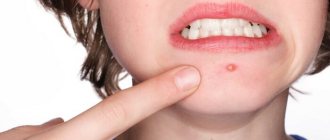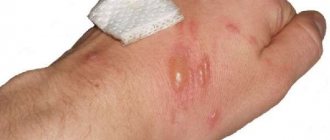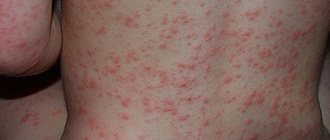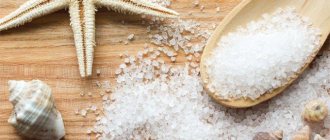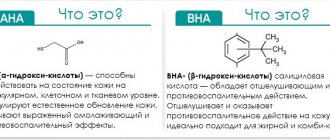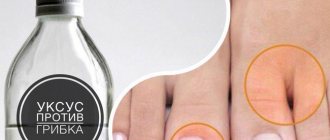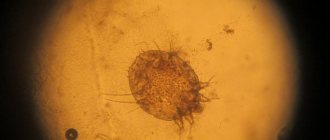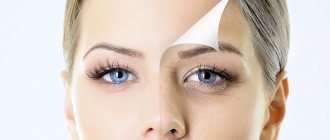Scientists say that 25% of the world's inhabitants have experienced urticaria at least once in their lives. This disease affects women twice as often. Hives appear as small red blisters on the body and severe itching. The blister is its main element. It is a limited swelling of the skin, convex, its size can exceed several centimeters. Another symptom of urticaria is severe and painful itching.
This disease in the medical literature is classified as an immediate allergic reaction. The cause of urticaria is increased sensitivity to medications, food, and insect bites. Nervous strain can also lead to hives.
Very often, urticaria (especially in children) occurs as a reaction in response to eating eggs, citrus fruits, sweets (especially chocolate), and strawberries.
Urticaria can take a chronic form (lasting more than one month). This is most often associated with diseases of internal organs (metabolic disorders, kidney or liver diseases). Sometimes chronic urticaria can be triggered by increased sensitivity of the body to cold/heat, as well as nervous disorders.
Treatment of urticaria should begin with identifying the allergen that caused it and eliminating contact with it (if possible). They also often resort to antihistamines of different generations and traditional medicine recipes.
Drug treatment
The basis of any treatment for food allergies is getting rid of the causative agent, the allergen. Usually the doctor prescribes complex treatment.
First of all, you need to drink a lot of liquid, activated carbon, laxative herbs (horsetail root, licorice, herbal teas) and medications.
For itching, doctors prescribe antihistamines Tavegil, Diazolin, Fenkarop, Cetrin. The dose is calculated based on the weight and age category of the person.
To maintain the immune system and digestion, it is recommended to take riboflavin, vitamin complexes, ascorbic acid and other supporting drugs, the dose of which is calculated according to the person’s weight and age.
An excellent remedy for progressive urticaria is Diphenhydramine, except in cases of recurrent urticaria. Then corticosteroid drugs are prescribed followed by a reduction in dosage. Corticosteroid balms and ointments are used externally.
A positive effect can be achieved by using home procedures: therapeutic wraps, baths, showers. For newborn babies and children, you can make herbal baths with string and chamomile. They help get rid of itching and reduce redness and pain symptoms on the first day. Water procedures should be given no more than 15-20 minutes a day.
Why does urticaria develop?
The main risk factor for the development of urticaria is the accumulation of substances that are the immune system's response to contact with an irritant. They provoke skin reactions and inflammatory processes. This may develop as a result of contact with the following irritants:
- insect bites;
- some food products;
- medicines;
- cold, UV rays;
- parasitosis, etc.
Altered reactivity of the body can manifest itself not only upon first contact with an irritant, but also in cases where a person has already encountered an allergen before.
General recommendations
Before starting treatment for urticaria, it is necessary to adjust the patient’s lifestyle.
Temporarily give up sports activities. During exercise, the skin sweats and heats up, which provokes even more irritation and pain symptoms. If this is not possible, then immediately after training take a bath with oatmeal.
By rubbing painful areas with ice cubes, you can narrow blood vessels and get rid of swelling and itching. Lotions with camphor oil and menthol eliminate unpleasant burning and itching.
How to recognize the disease
The symptoms of urticaria are quite specific, so it is not difficult to suspect this disease. The main features include the following:
- rash - blisters similar to those that occur after insect bites or nettle burns;
- itching;
- burning.
However, it is worth remembering that in some cases the disease is very severe, with the appearance of blisters on the surfaces of the blisters. Such inflammatory elements may contain hemorrhages due to damage to small vessels, so their contents include blood impurities.
The disease is sometimes combined with other allergic reactions: lacrimation, sneezing, swelling of the respiratory tract tissues, itching in the eye area, etc. Urticaria can be complicated by pulmonary pathology. Quincke's edema is the most dangerous complication of an allergic disease, which threatens the health and life of the patient. It is important to consult an allergist as soon as possible to prevent irreversible changes.
Diet for urticaria
You can treat urticaria at home with medication, using folk recipes and following a diet. To prevent the disease from recurring, it is necessary to cleanse the intestines, resume the functioning of the digestive system and remove certain foods from the diet:
- citrus;
- all berries and fruits;
- fatty fried foods;
- eggs;
- sausages;
- sweets;
- canned products.
You should give preference to the following products:
- corn, buckwheat;
- pepper, potatoes;
- legumes;
- olive oil;
- rice porrige;
- mushrooms;
- salty fish;
- Black tea.
When choosing a diet, you must be guided by the physiological characteristics of a person. You can cure hives caused by food with diet in 2-3 weeks. Introduce foods into the diet in small portions, boiled or steamed. If everything is fine, then you can safely use them.
How is the disease diagnosed?
An examination by a dermatologist or allergist-immunologist is the first step in diagnosing the disease. In order to make an accurate diagnosis, a number of studies are used, such as:
- general clinical blood tests (an increase in eosinophils indicates the development of an allergic reaction);
- determination of general and specific immunoglobulins in blood serum (determines the allergic mood of the body);
- allergy tests (allows you to identify the allergen that provokes a negative reaction);
- serological diagnostics, etc.
Based on the results of the examination, the doctor receives an accurate picture of the course of the disease.
Folk remedies for oral administration
Celery root
Celery root is crushed using a grater or meat grinder. The resulting pulp is squeezed out. Dose per dose – 2 teaspoons. It is recommended to take celery juice three times a day. Instead, you can prepare an infusion. To do this, crushed fresh root (2 tablespoons) is poured with cold water and filtered after 2 hours. You can take a third of a glass at a time. Drink juice three times a day. It must be remembered that celery is a strong natural diuretic.
Liquorice root
For hives, you need to take a small piece of licorice root (the size of a bean) orally every day.
Horseradish juice + honey
Both components are mixed in equal quantities and drunk three times throughout the day (a teaspoon).
Valerian tincture + hawthorn tincture
Combine the tinctures (in equal quantities). Dissolve 30 drops of the product in a small amount (50 ml) of water. Take it in the evening (best before bedtime). This medicine helps calm the nervous system, get rid of itching, and strengthen the immune system.
Valerian root + hops (cones) + lemon balm
Take 20 grams. each plant in dry form and mixed. A tablespoon of the mixture is poured with boiling water (1 cup). Leave until completely cooled and then filter. A single dose is 100 g, drink this medicine for urticaria 4 times a day.
Duckweed
It is dried, crushed into powder, which is used for urticaria, a tablespoon 3 (or 4) times a day. You can prepare a decoction from duckweed. To do this, pour boiling water over the seaweed (crushed), leave it, and drink it immediately after half an hour.
Series
In order for all the symptoms of urticaria to completely disappear, regular tea/coffee must be replaced in succession. They prepare tea from the string, just like ordinary tea, but let it brew for 20-30 minutes. The color of the drink is only golden. If it becomes cloudy (green), this means the loss of healing properties. This remedy can also be used externally (wipe the affected areas or add to the bath).
Thyme or valerian
Thyme (or valerian root) is brewed with boiling water. Proportions: grass - a tablespoon, boiling water - 1 glass. A glass of decoction is drunk throughout the day in three doses. Has a calming effect and relieves itching. Thyme and valerian can be replaced with thyme.
Nettle
The flowers of this plant are poured with boiling water in the following proportion: fresh (or dried) flowers - a tablespoon, boiling water - 1 glass. The container with the broth is wrapped and left for half an hour, after which it is carefully filtered. Drink 0.5 glasses 4 (or 5) times a day. You can prepare an infusion of nettles and make lotions. To do this, the leaves of the plant (30 grams) are poured with water and allowed to boil, and then boiled over low heat for 3-4 minutes. Leave for about an hour. Strain. Lotions can be done several times during the day.
Myths and truth about urticaria
Urticaria is a skin disease. It is characterized by rashes similar to nettle burns and itching of varying severity, often severe. If the rash lasts less than 6 weeks, it is acute urticaria. More than 6 weeks - chronic.
Myth .
Urticaria may be accompanied by poor health, fever, cough, headache, rashes in the mouth, swelling, joint pain, diarrhea, and vomiting. Is it true . Such symptoms may be a manifestation of a systemic allergic reaction (this may also include urticaria) or individual diseases.
Myth . Hives are an allergy.
Is it true . The disease is associated with the release of biologically active substances (transmitting signals from cell to cell) by immune (mast) cells of the skin under the influence of various reasons. One of the reasons may be allergies. In most cases, the manifestation of chronic urticaria occurs without an understandable external cause as a result of the action of autoantibodies (antibodies to the body's own proteins) on cell receptors.
Myth . Urticaria occurs due to the presence of chronic infection and bacterial allergies, worms, disturbances in the gastrointestinal tract, and the circulation of toxins in the body.
Is it true . The most common cause of acute urticaria is viral infections (ARVI).
Urticaria can occur when infected with worms, but there is no need to look for worms in all patients. Our region, according to WHO, is not endemic (infection with worms in central Russia occurs infrequently). Therefore, when urticaria manifests itself, it is logical to conduct an examination for worms after staying in regions with a high prevalence of helminthic infestations (Asia, Africa), in the presence of other symptoms and characteristic changes in a routine blood test.
It is assumed that infection of the gastrointestinal tract with H. pylori (a bacterium that causes stomach ulcers and erosions) may be important. The connection between urticaria and other diseases or functional disorders of the gastrointestinal tract has not been confirmed. Moreover, it makes no sense to search for and treat certain elusive and unmanifested conditions. The circulation of toxins in the body is a myth (there is no evidence), and accordingly, urticaria cannot occur for this reason. Chronic urticaria or so-called urticaria-like rashes (similar to hives) may indicate the occurrence of some serious common diseases.
Myth . If the patient has a high sensitivity of the body to allergens, then he may experience chronic recurrent urticaria. High sensitivity markers can be antibodies to Epstein-Barr viruses and cytomegalovirus.
Is it true . Allergic urticaria occurs acutely upon contact with a specific allergen. There are usually few such allergens for one patient. These can be foods (usually fish, nuts, eggs), insect bites. The detection of antibodies to viruses in the blood indicates that a person has had contact with the virus and has developed a protective reaction of the immune system. Antibodies to viruses are not related to allergies and do not affect the release of biologically active substances in urticaria.
Myth . If you have urticaria, it is necessary to conduct a comprehensive examination.
Is it true . In most cases, acute urticaria does not require examination. For chronic urticaria, specific studies are indicated, but not a complete examination of the body.
Myth . In acute cases of urticaria, it is necessary to go to the hospital, otherwise recovery will be delayed and complications will arise.
Is it true . Indications for hospitalization are severe urticaria, combination with edema, bronchospasm or other manifestations of anaphylaxis (severe allergic reaction), or a violation of the general condition.
Myth . If you have urticaria, you must follow a special hypoallergenic diet. In case of acute urticaria, it is forbidden to eat even food that was previously well accepted by the body. During an exacerbation, a person’s reaction to food is difficult to predict, so a gentle menu or even complete fasting is necessary.
Is it true . It is necessary to exclude only those foods to which a person has a proven allergy. The prescription of a diet for chronic urticaria is controversial. The benefit of a diet avoiding pseudoallergens or histamine-containing foods in the treatment of chronic urticaria has not been proven by research. Following such diets poses significant challenges and is not supported by most current clinical guidelines.
Myth . For urticaria, it is necessary to prescribe corticosteroid hormones in tablets or droppers.
Is it true . Indications for the use of corticosteroid hormones include severe urticaria, edema, bronchospasm, or other signs of anaphylaxis. This treatment will help relieve severe or life-threatening symptoms, but will not affect the further course of the hives.
Myth . It is necessary to cleanse the body with laxatives, enemas, sorbents, diuretics, hepatoprotectors and choleretic agents, use hyposensitizing drugs such as sodium thiosulfate and calcium gluconate, restore the microflora with probiotics and drink vitamins.
Is it true . All these drugs have no proven effectiveness; their effect is assumed to be through their influence on non-existent mechanisms. In accordance with modern recommendations, treatment should be aimed at reducing the release of biologically active substances, primarily histamine. The main group of drugs for the treatment of both acute and chronic urticaria are type I histamine receptor blockers (antihistamines), a combination of different drugs or an increase in dose is possible. If the effect of using antihistamines is insufficient, antileukotriene drugs and type II histamine receptor blockers are added to treatment. And in severe cases, antibodies to immunoglobulin E (omalizumab) or immunosuppressive therapy with cyclosporine.
All myths are quoted from the Russian-language Internet, although they are quoted from the international consensus document EAACI/GA2LEN/EDF/WAO and the Federal Clinical Guidelines of RODVK.
Author:
Vera Removna Voronina , dermatologist
Folk remedies for external use
Tricolor violet flowers
To prepare the infusion, pour boiling water over the flowers and leave for a couple of hours. Proportions: flowers – 3 tablespoons, boiling water – 1 liter. The infusion is added to a bath of water. The procedure helps reduce the itching sensation. You can treat in this way for no longer than 2 weeks, otherwise the condition may worsen. For urticaria, baths with a decoction of oak bark or chamomile (5 liters per bath) are also effective.
Plum tree resin
It is ground with table vinegar and applied to the skin of children with hives.
Raw potatoes
It is rubbed and applied to the affected skin (for half an hour). After finishing the procedure, wash off the remaining potato mass with warm water. Raw potatoes also improve the condition of the skin in cases of erysipelas, burns, trophic ulcers, lupus erythematosus, edema, and fungal infections.
Dill
A clean napkin is moistened in fresh dill juice and applied to the affected skin for half an hour. The result is that the itching disappears and the skin heals faster.
Beans
Bean broth - gauze or a clean cloth is soaked in it and applied to the areas of skin affected by hives. You can also add the decoction to your bath water. After the procedure, the skin recovers faster. Proportions: beans – 20 g, water – 1 liter.
Baking soda
Baking soda is a wonderful (and most affordable) way to get rid of the itching that plagues hives. It is added to (hot) bath water. If there is not much water in the bath, then one cup of baking soda will be enough, and for a large bath you will need 2 cups.
Tomatoes or vinegar
If multiple rashes occur with urticaria, you can improve the condition of the skin by rubbing it, adding vinegar or fresh tomato juice to the water.
Hormonal ointments for itching and skin rashes
Local medications containing hormones should only be prescribed by a doctor.
The list of funds includes:
- Prednisolone;
- Flucinar;
- Celestoderm.
Any ointment is selected individually for each individual case and is prescribed exclusively to adults. Hormonal drugs have a high level of effectiveness, but it is not advisable to use them for more than two weeks.
Methods for diagnosing skin diseases:
- Diagnosis of skin diseases
- Diagnosis of skin diseases at home
- Diagnosis of allergic skin diseases
- Diagnosis of bacterial skin diseases
- Diagnosis of viral skin diseases
- Diagnosis of hair diseases
- Diagnosis of nail diseases
- Diagnosis of skin tumors
- Skin scraping
- Blisters on the skin
- Dermatoscopy
- Demodex tests
- Diagnosis of sexually transmitted infections
- Mushroom tests
- Skin scraping
What you need to know before starting home treatment
Treatment of urticaria with folk remedies is permissible only after consultation with your doctor. Since in most cases a person with urticaria is prescribed antihistamines, the use of tablets and folk remedies requires caution. The composition of home remedies should not “contradict” medications.
People who think that at home they can get rid of urticaria forever should take into account that urticaria can only be treated symptomatically. Sometimes the disease goes away with age, as happens in children.
If a person visits a doctor, leads a healthy lifestyle, eats right and takes care of his health, he can achieve long-term remission.
Any home remedies are prohibited until it is clear what factors provoke the disease.
Quality of life of patients with chronic urticaria
In one clinical study, patients with chronic urticaria were asked: what is the worst symptom of your disease [17]? Most patients gave more than one answer to the question, of which 59% noted swelling as the worst symptom of urticaria, 42% itching, and 22% pain. In addition, 22% of patients noted symptoms of the disease such as feeling tired, irritable, weak, or feeling out of control over their lives. In 20% of cases, patients were very concerned about the unpredictability of the development of the next exacerbation of urticaria, in 18% of cases, problems for patients were social restrictions, in 13% - a feeling of awkwardness, in 7% - difficulties in doing work, in 7% - restrictions on eating or wearing clothes , in 5% - unwanted side effects of medications, in 3.6% - the inability to relax and rest.
Patients with chronic urticaria experience a wide range of negative emotions. Thus, most of them suffer from nonspecific anxiety and are afraid that their urticaria is caused by another, more serious disease. In addition to anxiety, people with urticaria suffer from anger and depression. It is difficult for them to cope with emotions, due to the fact that they were unable to properly identify, express and convey their feelings, i.e. suffered from alexithymia [18]. Moreover, the severity of these symptoms directly correlates with the severity of itching.
It should also be noted that patients with chronic urticaria often suffer from concomitant psychiatric pathology - comorbid mental illnesses were identified in 34.5% of patients with urticaria: in the general population - 25%, among patients with psoriasis - 26% [18]. Most often, patients with chronic urticaria had concomitant anxiety (30%), as well as depressive (17%) and somatoform (17%) disorders. Agoraphobia is the most common (15%) manifestation of anxiety [19].
First aid for rashes
A person who is prone to attacks should know what to do with hives if the disease worsens. It is important to learn to recognize the symptoms of anaphylaxis and angioedema, which often accompany urticaria.
A sudden drop in blood pressure, difficulty breathing, hoarseness and pain in the lower abdomen indicate the onset of anaphylactic shock, which requires immediate hospitalization. At the first signs of shock, a person should call an ambulance and take antihistamines, epinephrine (adrenaline), and hormones. These products are prescribed by a doctor and should always be kept in your home medicine cabinet.
- If there are no symptoms of anaphylactic shock, an attack of urticaria is accompanied by rashes and itching, you can limit yourself to an antihistamine, for example, Suprastin or Tavegil.
- It is necessary to immediately remove the allergen that triggered the attack, be it medications or any food, for example, chocolate, wine, citrus fruits.
- If urticaria is a reaction to food, you can take absorbent drugs, activated, white carbon, Enterosgel.
- In case of an insect bite, carefully remove the sting from the skin.
- If the rash is caused by a contact allergen, for example, a cosmetic or detergent, it should be washed off the skin with plenty of warm water.
Urticaria in children
Due to the imperfection of the protective functions of the unformed body, urticaria in children is recorded more often than in adults. All types of diseases occur in children, but problems often arise in establishing an accurate diagnosis. Especially, a rash forms on the body of a small child who does not yet know how to speak and cannot talk about how he is feeling.
The biggest problem is caused by urticaria in infants. Experiencing unbearable itching, the newborn baby bursts into tears, tormenting himself and his parents. Urgent action needs to be taken here. First, call a doctor. Secondly, treat the skin with special products to relieve itching. It is important to remember that urticaria in infants cannot be treated with the same medications that are used by adults and older children. For treatment, drugs approved for the treatment of young children are used.
Urticaria in older children is easier to treat, but even here, consultation with a specialist is necessary. Otherwise, the disease may become chronic.
Potato
Compresses made from this raw root vegetable have a beneficial effect on blisters that appear, relieving severe itching.
To make such a compress, you must follow the following instructions:
- First, wash and peel the potatoes, then grate them.
- Place the resulting mass on a gauze bandage and apply to the skin area.
- Cover the top of the compress with cling film.
- The duration of the procedure should be no less than half an hour.
- After the time has passed, treat the skin with water at room temperature.
If this type of procedure is intended for children, then its time can be reduced to 15 minutes.
Lotions can be made from potato leaves, as well as other nightshade crops, as they contain a large amount of tannins. They are responsible for relieving swelling and helping the skin calm down.
To prepare, you need to boil a dozen leaves for five minutes, and after cooling, you can begin the procedure. Leave the lotions on for 15 minutes.
